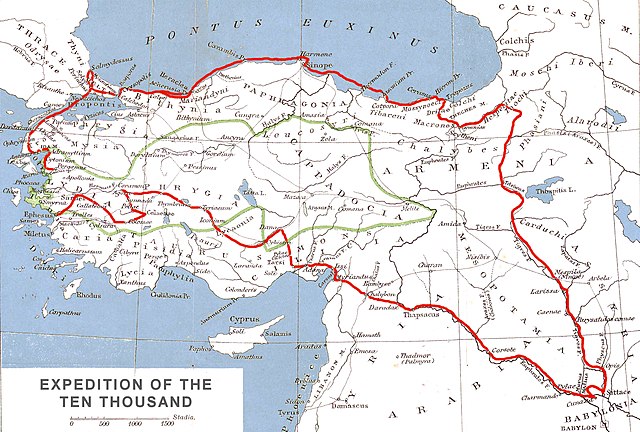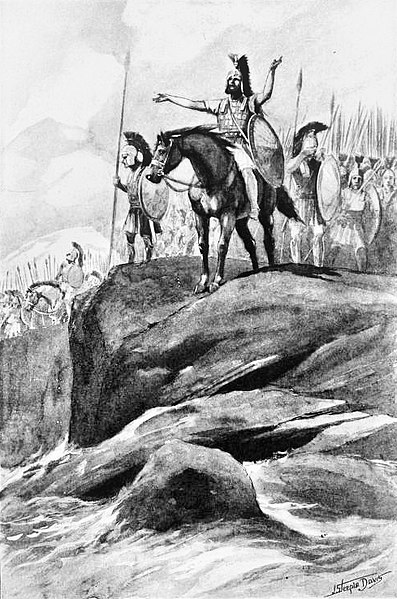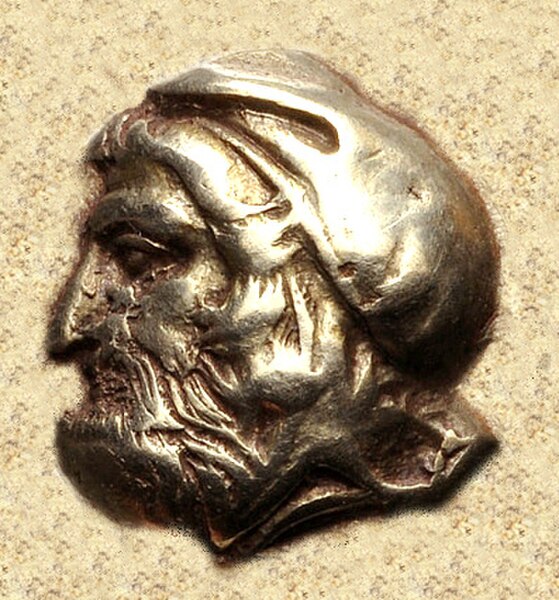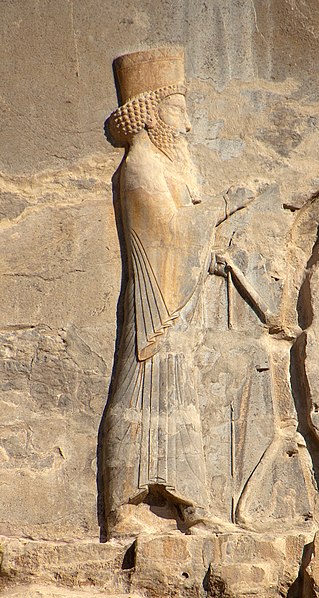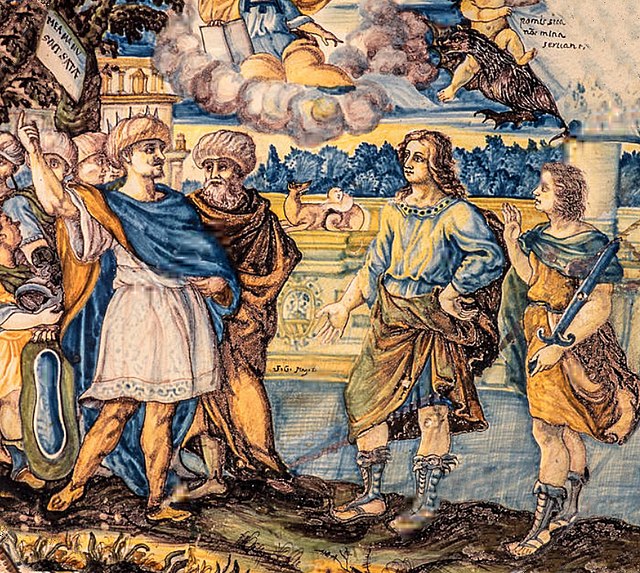The Ten Thousand were a force of mercenary units, mainly Greeks, employed by Cyrus the Younger to attempt to wrest the throne of the Persian Empire from his brother, Artaxerxes II. Their march to the Battle of Cunaxa and back to Greece was recorded by Xenophon, one of their leaders, in his work Anabasis.
Route of Xenophon and the Ten Thousand (red line) in the Achaemenid Empire. The satrapy of Cyrus the Younger is delineated in green.
Xenophon's Anabasis.
Retreat of the Ten Thousand at the Battle of Cunaxa, by Jean-Adrien Guignet. Louvre
Xenophon and the Ten Thousand hail the sea, 19th-century illustration
Cyrus the Younger was an Achaemenid prince and general. He ruled as satrap of Lydia and Ionia from 408 to 401 BC. Son of Darius II and Parysatis, he died in 401 BC in battle during a failed attempt to oust his elder brother, Artaxerxes II, from the Persian throne.
Anonymous portrait of a satrap of Asia Minor, around the time of Cyrus the Younger. From a coin of Ionia, Phokaia, circa 478-387 BC.
Relief depicting Artaxerxes II, from his tomb at Naqsh-e Rostam, Persepolis
Meeting between Cyrus the Younger and Spartan general Lysander in Sardis. The encounter was related by Xenophon. Maiolica decoration by Francesco Antonio Grue (1686–1746).
Jean-Adrien Guignet, Episode in the Retreat of the Ten Thousand (1842). The Greek mercenaries of Cyrus (the "Ten Thousand"), are shown being encircled.

